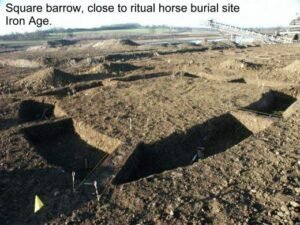An oppidum is the name given to a large population centre, with varying levels of fortification. So far, this concept of Iron-Age cities has not really been applied to the British Iron-Age, though many individual hillforts have been suggested.
Category: Iron Age
Jan 24
Briefing – The Myth of Breogán and the Tower of Heracles
Breogán is a legendary figure in Galician mythology and is regarded as the founder of the Galician people. The myth of Breogán is part of the ancient Celtic tradition, and while the details of his story vary across sources, he is universally seen as a key figure in the mythological ancestry of the Galicians.
Jan 23
Guide – Archaeological Periods in Western Europe
Understanding the archaeological periods across Western Europe is essential for exploring the evolution of human societies from prehistory to the beginnings of written history. These periods are generally defined by shifts in technology, social organization, and the environment, and they often vary slightly from region to region.
Ingleborough Iron Age Hillfort
Ingleborough Hill, located in the Yorkshire Dales, is known for its prehistoric significance, particularly its hill fort. The hill fort atop Ingleborough is located at an elevation of about 723 meters (2,372 feet) above sea level, making it one of the highest known Iron Age settlements in the region.
Altar dedicated to Nympha Brigantia – Castlesteads?
“This offering to the goddess-nymph Brigantia, which he had vowed for the welfare and safety of our Lord the Invincible Emperor Marcus Aurelius Severus Antoninus Pius Felix Augustus and of his whole Divine House, Marcus Cocceius Nigrinus, procurator of our Emperor and most devoted to his divinity and majesty, gladly, willingly, and deservedly fulfilled.”
Altar dedicated to Jupiter of Doliche, Caelestis Brigantia, and Salus – Corbridge
“To eternal Jupiter of Doliche and to Caelestis Brigantia and to Salus Gaius Julius Apolinaris, centurion of the Sixth Legion, at the command of the god (set this up).”











